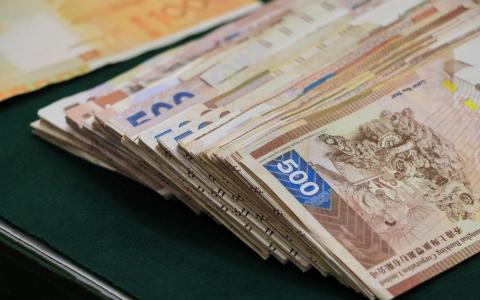
Investors are debating whether to engage more actively in currency trading as government bonds offer scanty yields, raising doubts over their ability to act as safe havens.
As monetary policy makers slash interest rates to rock-bottom levels and even emerging market central bankers start to play with quantitative easing, the frequency and strength of rallies in government bond markets, necessary to offset selloffs in equities, have diminished.
“In developed markets where rates go to zero, yields have lost a lot of that diversification,” said Clifton Hill, global macro portfolio manager at Acadian Asset Management, in an interview.
The issue of what can substitute for bonds has become a pressing issue as their yields come to a standstill. Since March, the benchmark 10-year Treasury yield fluctuated around a narrow band between 0.60% and 0.70%, aside from a brief foray higher to 0.90% in June. Bond prices move inversely to yields.
Yet foreign exchange markets can still see big swings from day to day, a growing point of attraction for some investors who say currencies could take up for some of portfolio ballast role usually filled by government bonds.
“Something has to move to reflect fundamental dynamics,” said Ugo Lanzioni, head of currency management at Neuberger Berman, in an interview. “ You should see greater adjustments in FX as fundamentals have to use FX as a pressure valve.”
In other words, currencies were now the main asset that adjusted to cross-country economic shifts in lieu of interest rates.
Previously, Lanzioni said investors attracted to currencies were interested in limiting the risks around sharp fluctuation in exchange rates, which could wipe out the returns of their global bond and equity portfolios.
But now he was fielding more inquiries from investors who felt the returns generated by bonds and corporate debt had been exhausted, and wanted to look for alternative sources of returns that did not move in line with other markets.
The growing interest could translate into increased volatility in exchange rates if more institutional investors ramp up their operations in currency trading, said Lanzioni.
So how can an investor use currencies to limit the damage from weakness in risky assets?
One way to position against a downdraft in equities could be to hold the Swiss Franc and the Japanese yen.
A more sophisticated strategy Hill employs is to keep short positions in currencies of Latin American economies, which can come under severe pressure when global equity markets and commodities sell off.
The growing prominence of currencies comes as more money managers are rethinking the value of government bonds in their portfolio amid growing doubts over the typical 60/40 model, where a majority of the holdings were in risky assets such as stocks with the remainder in government bonds as ballast against any market selloffs.
So far, Hill says the debate is undecided.
“It’s a mixed bag. Those who focus on the yield as opposed to the appreciation of the actual bond are more apt to getting out of using fixed-income as a hedge. But people who believe bonds can still appreciate in this environment – for example, in Europe – tend to stick with a traditional 60/40 strategy,” he said.
Yet for many U.S.-based investors who don’t dive in currency markets like their more global-minded peers in Europe and Japan, the idea of currencies as portfolio diversification may receive a tough reception.
“People tend to see it as more of a speculation trade,” Yung-Yu Ma, chief investment strategist at BMO Wealth Management, told MarketWatch.
This article originally appeared on MarketWatch.



